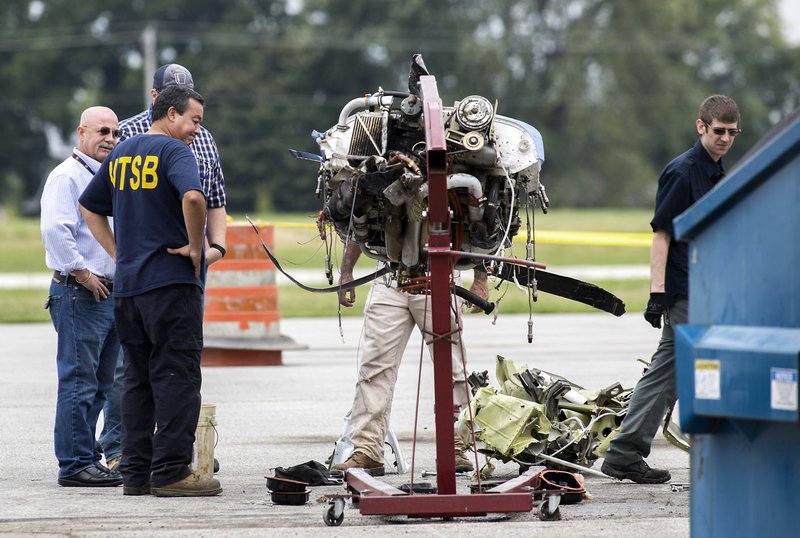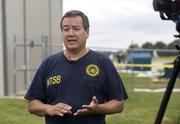BENTONVILLE -- Two airplanes were traveling toward each other before one veered off course and crashed into a hangar at the Bentonville Municipal Airport, killing the pilot, a National Transportation Safety Board official said Thursday.
Rex Grimsley, 70, of Bentonville died Wednesday morning when his 1983 Beechcraft Bonanza hit the hangar at 2410 S.W. Aviation St. around 9:30 a.m.
John Brannen, senior air safety investigator for the National Transportation Safety Board, investigated the scene of the fatal crash Thursday morning along with Federal Aviation Administration officials and representatives from Beechcraft and Continental Motors, the company that built the engine in Grimsley's plane.
Grimsley was taking off to the south as another plane was landing to the north, Brannen said. Grimsley swung left then crashed into the hangar, and the plane caught fire, Brannen said. Grimsley died in the crash.
Planes typically land into the wind. The direction to land is at the pilot's discretion if there is little to no wind, as there was Wednesday morning, Brannen said.
"That's definitely a possibility, yes," Brannen said when asked whether the planes would have collided had Grimsley's plane not changed course.
Bentonville Municipal Airport is an uncontrolled airport, meaning it doesn't have an operating control tower.
"It's really see-and-avoid and hear-and-avoid for other traffic when you're in an uncontrolled environment," Brannen said.
While uncontrolled airports don't have typical air traffic control, they have what's called a common traffic advisory frequency that pilots use to announce their intention to take off or land and to announce their positions, he said.
"Unfortunately, common traffic advisory frequencies are not commonly recorded, so we won't have any way to listen to recordings of what communications were happening at the time," he said.
There are some radio recordings that are available, but they're between the pilot who was landing and a control station. That communication took place before the pilot was transferred to the common traffic advisory frequency, Brannen said.
Communication from pilots flying in and out of Bentonville go through a control station in Fort Smith, said Ben Peters, airport manager.
Federal officials were still working on the on-scene investigation, which primarily focuses on the wreckage, by early evening Thursday. Brannen said that portion of the investigation includes looking at the airplane, its systems and the engine to see whether everything was functioning properly.
Brannen said it will take six months to a year before the final investigation is complete and a probable cause of the crash can be determined.
The investigation will include interviews with airport officials and the surviving pilot of the second plane, a look into Grimsley's background, and other factors.
The Airport Advisory Board held a regularly scheduled meeting Thursday, at which Chairman Brian Baldwin held a moment of silence to honor Grimsley.
"We lost a very good friend, a resident of the airport, a supporter of the airport and a good human and citizen of our community," he said.
Grimsley was a local businessman and former Bentonville School Board member. He was recognized by the Federal Aviation Administration in 2013 with its prestigious Airmen Certification Database, which names certified pilots who have met or exceeded the educational, licensing and medical standards set by the administration.
Baldwin said Thursday that it's human nature to want to talk about the crash and speculate what could have been done to prevent it, but he encouraged the board to refrain from that and to support the agencies involved in the investigation and focus on the meeting's agenda items.
Gene Page, a Bentonville Police Department spokesman, gave the board a briefing on the response to the crash.
The first call came in at 9:30 a.m., and the Fire Department had engines en route by 9:31 a.m. and the Police Department was on scene by 9:35 a.m., he said.
The Fire Department responded from all six of its stations. The Police Department was able to preserve the scene, knowing the investigation would be taken over by federal authorities, Page said.
"We couldn't have asked for a better response, a better team effort," he said, adding that the transition from local to federal authorities went smoothly.
Metro on 09/02/2016

